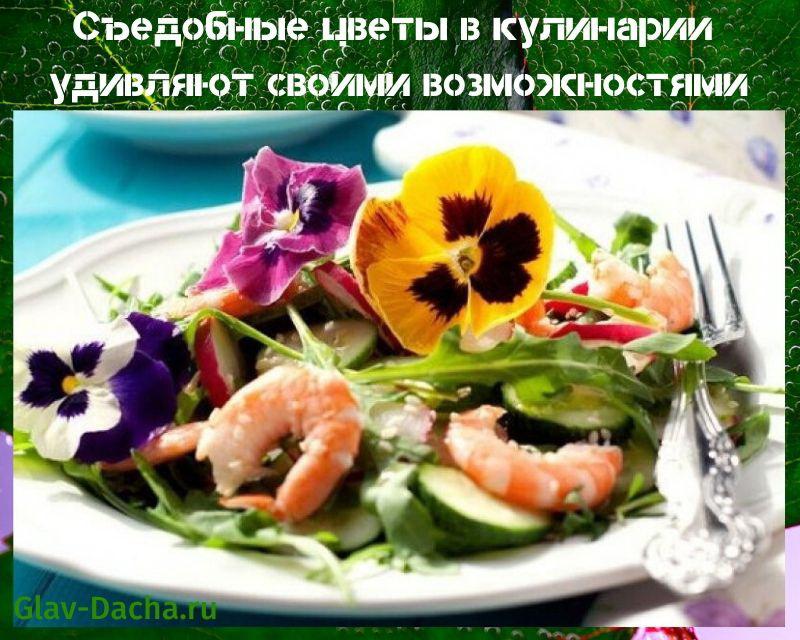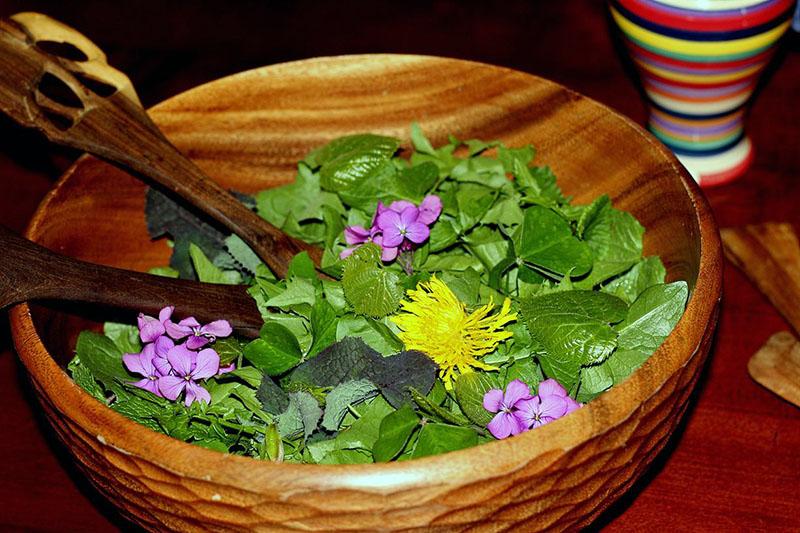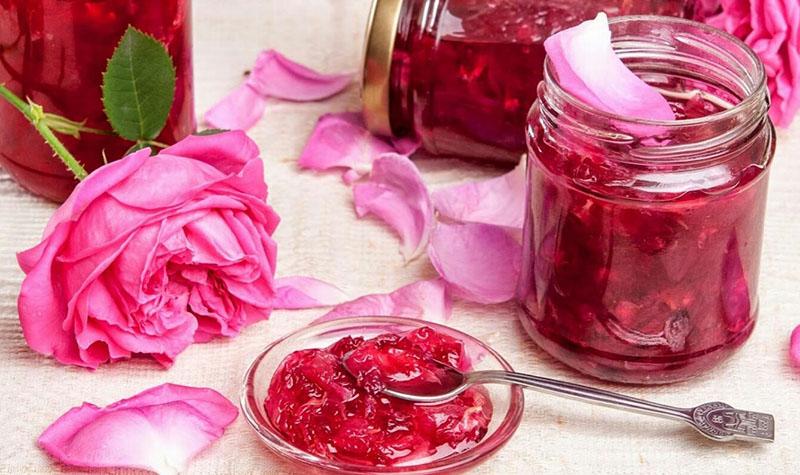Edible flowers in cooking surprise with their possibilities
 Food is an art, but not only in terms of taste. Edible flowers have been used in cooking for over 4,000 years. With floral decor, ancient chefs gave food sophistication and royal splendor. Bright petals and exquisite buds were the final touch of the mouth-watering masterpiece. Luxurious flower arrangements on the plate still have not lost their significance. They add an extraordinary flavor to the dish. For advice on how to use them, you should turn to professionals. Master chefs of haute cuisine know exactly which flowers go well with food. Also, adventurous gourmets will tell you about the features of some of them.
Food is an art, but not only in terms of taste. Edible flowers have been used in cooking for over 4,000 years. With floral decor, ancient chefs gave food sophistication and royal splendor. Bright petals and exquisite buds were the final touch of the mouth-watering masterpiece. Luxurious flower arrangements on the plate still have not lost their significance. They add an extraordinary flavor to the dish. For advice on how to use them, you should turn to professionals. Master chefs of haute cuisine know exactly which flowers go well with food. Also, adventurous gourmets will tell you about the features of some of them.
Edible flowers in cooking create masterpieces

The top three are headed by:
- Rose is the queen of flowers. The perfection of beauty is the aristocratic rose. A fragrant preparation is made from flower petals in Turkey jam - gulbesheker. In addition to salads and desserts, tea, liqueur and a cruchon are prepared from bush petals. As a result, drinks acquire a slightly bitter taste.

- Noble orchid. With its grace, as well as delightful colors, it is not inferior to a rose. These edible flowers are used to decorate cakes, desserts and fruit salads. In tandem with refined orchids, the French serve elite cheeses and truffle dishes.

- Pansies. In the company with violets (a kind of fragrant), luxurious flowers are used to decorate salads, drinks and fruit desserts. Plant petals infuse food with a fresh mint flavor. Italians practice even pasta decorating with pansies.

A taboo in cooking is imposed on the inflorescences of potatoes, hydrangea, lily of the valley, tomato, narcissus and room violet (Saintpaulia). Rhododendron, hellebore, wisteria, and legume also pose a threat to the human body.
Calendula flowers are often added to salads and sweets. Thanks to their inconspicuous and neutral aroma, confectioners can use the flowers to make cheesecakes. With this golden orange culture, original, vibrant patterns are created.  It is worth knowing that during the heat treatment, oils are released from the buds, which serve as an alternative to saffron. The collection of edible flowers for decorating dishes includes many other varieties of flora.
It is worth knowing that during the heat treatment, oils are released from the buds, which serve as an alternative to saffron. The collection of edible flowers for decorating dishes includes many other varieties of flora.
Acacia inflorescences are rich in sweet nectar. They make aromatic jam. Another plant is added to many desserts. These colors are infused with wine.
Dandelion - the first herald of spring
 The well-known weed has excellent medicinal properties and bright taste. Spring soups or cabbage soup acquire a spicy taste thanks to the juicy young leaves of the culture, which bring notes of natural bitterness to food.
The well-known weed has excellent medicinal properties and bright taste. Spring soups or cabbage soup acquire a spicy taste thanks to the juicy young leaves of the culture, which bring notes of natural bitterness to food.  Dandelion goes well with vegetables. However, it is added to salads in moderation to avoid bitterness. In addition, the plant is used in the preparation of wines.
Dandelion goes well with vegetables. However, it is added to salads in moderation to avoid bitterness. In addition, the plant is used in the preparation of wines.
To get rid of excess bitterness, you need to soak the dandelion in a salt solution for several hours.
Lavender - sweet notes in purple tones
 Delicate lavender blossoms have a memorable rich aroma with a hint of sweetness.
Delicate lavender blossoms have a memorable rich aroma with a hint of sweetness.
These features of a field plant are successfully used for preparation:
- cool drinks;
- sweets;
- cookies;
- cupcakes;
- ice cream;
- chocolate desserts.
 Residents of the French district of Provence love to complement soups, salads and sauces with lavender. However, the Europeans consider meat dishes and inflorescences of aromatic herbs to be the most successful flavor combination. Braised or roasted lamb with mashed sprigs of culture reveals the taste of delicate meat in a new way. In addition, lavender is used as a condiment for baking bread.
Residents of the French district of Provence love to complement soups, salads and sauces with lavender. However, the Europeans consider meat dishes and inflorescences of aromatic herbs to be the most successful flavor combination. Braised or roasted lamb with mashed sprigs of culture reveals the taste of delicate meat in a new way. In addition, lavender is used as a condiment for baking bread.
Many culinary experts are interested in the name of sweet flower juice. In fact, this is the usual nectar that the plant produces. The substance is rich in sugars, mineral salts and other enzymes.
Cucumber herb or see the color of the sky at ease
 the shade of delicate borage blossoms lends a delightful contrast to cakes, casseroles and lemonades. Salads and roasts are prepared with young leaves of cornflower blueberry (another name). In order for vegetables to acquire a piquant and cucumber taste, cooks often use the flowers of this herb.
the shade of delicate borage blossoms lends a delightful contrast to cakes, casseroles and lemonades. Salads and roasts are prepared with young leaves of cornflower blueberry (another name). In order for vegetables to acquire a piquant and cucumber taste, cooks often use the flowers of this herb.
Nasturtium is a child of the sun
 The orange-yellow petals of the plant are used in cooking as a seasoning. Their pronounced pungency serves as an excellent flavor enhancer in meat dishes. At the same time, a rich shade nasturtium allows you to use it as a colorant for drinks and alcohol. This seasoning is especially popular with the British.
The orange-yellow petals of the plant are used in cooking as a seasoning. Their pronounced pungency serves as an excellent flavor enhancer in meat dishes. At the same time, a rich shade nasturtium allows you to use it as a colorant for drinks and alcohol. This seasoning is especially popular with the British.
The delicate petals of the culture perfectly impress:
- sandwiches;
- casseroles;
- cheeses;
- snacks.

Green nasturtium seeds are included in the recipe for the famous "capers". The seeds are salted for 24 hours and then marinated in a vinegar solution for another 7 days.
Collection of other edible flowers
 Many great culinary experts love to experiment. During these culinary experiences, chefs find unique solutions using edible flowers in their culinary arts. Understanding what kind of flowers people can eat and what not, they significantly expand the diet of their country.
Many great culinary experts love to experiment. During these culinary experiences, chefs find unique solutions using edible flowers in their culinary arts. Understanding what kind of flowers people can eat and what not, they significantly expand the diet of their country.
Each chef's arsenal of exotic ingredients includes flowers:
- hibiscus;
- mallow;
- aniseed hyssop;
- mint;
- elderberry;
- jasmine;
- chervil;
- monards.
Many gourmets boldly put lemon verbena inflorescences in tea. Fragrant petals are a good substitute for citrus fruits in hot drinks.
For lovers of dishes with a subtle tinge of bitterness, professionals suggest choosing chrysanthemums, lilies, daisies or chicory flowers. Fuchsia or gladiolus petals will help to add bright colors when decorating food. Lilac inflorescences are usually added to jam or ice cream, which has a sharp taste. Marigolds are a separate item. Only 2 varieties of the Jam variety are used in food: Lemon and Mandarin.
Marigold flowers perfectly set off the taste:
- hen;
- fish;
- desserts;
- baking;
- marinades;
- salads;
- drinks.
Geranium flowers can be frozen in ice cubes and served with drinks. Dairy dishes (whipped cream or sour cream, ice cream or curd puddings) harmonize luxuriously with the petals of the aromatic culture.
 Culinary experts also masterfully use edible houseplants in their masterpieces. In greenhouse conditions, lavender and cucumber grass feel great. In addition, flowers of arugula, dill, thyme, rosemary and basil are always “welcome guests” in festive dishes. This list of edible flowers is constantly expanding. Much depending on the culinary fantasies of local chefs.
Culinary experts also masterfully use edible houseplants in their masterpieces. In greenhouse conditions, lavender and cucumber grass feel great. In addition, flowers of arugula, dill, thyme, rosemary and basil are always “welcome guests” in festive dishes. This list of edible flowers is constantly expanding. Much depending on the culinary fantasies of local chefs.